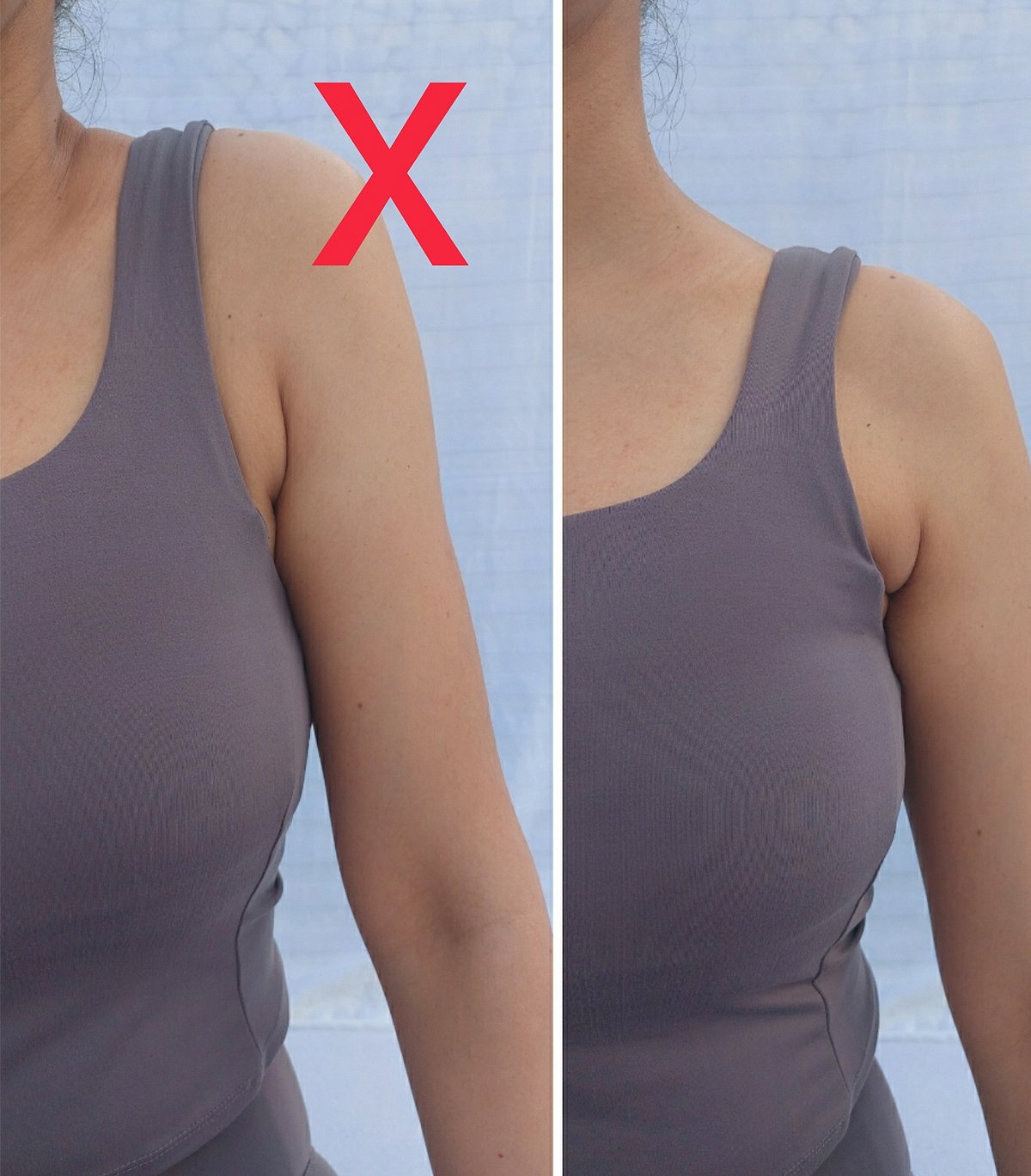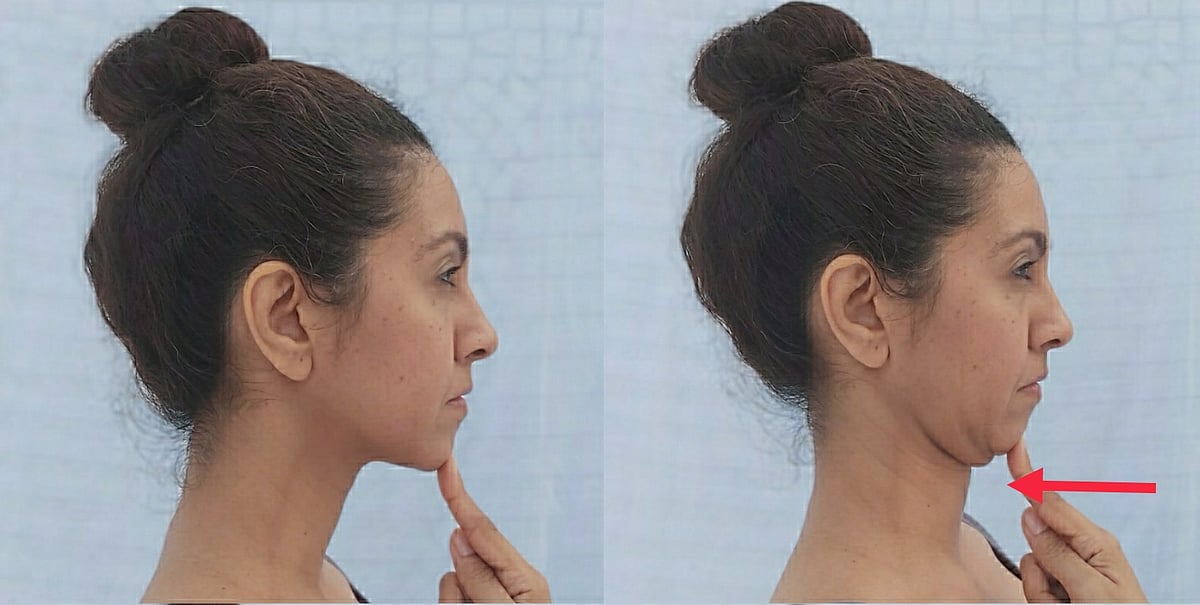The cause of postural dysfunction lies in our faulty daily movements, which over a prolonged period of time become habits. Some of these movements are enumerated below.
1. Constantly shouldering a bag only on one side or carrying a heavy backpack nor wearing it right
If only one shoulder is used periodically to carry weight it leads to a dominant shoulder and arm with a tight chest and overused neck muscles.
This usually causes a lopsided neck. Some people stoop more on one side, which creates a deviation in the neck and the waist. Many office-goers unknowingly carry their backpacks with heavy computers on one shoulder.

Hikers and school kids load backpacks on both shoulders inappropriately, thereby increasing the pressure on the spine by pulling it forward in an excessive anterior tilt that gives lower back pain.
Solution: If you have to regularly carry a bag, keep changing the shoulder you carry it on every few minutes. The right starting point while wearing a backpack is to position it two inches higher than the shoulder blades — at shoulder level and ending two inches below the waist level (below the belly button). Going lower, closer to the lower back, will cause lower and upper back pain. So, tighten your backpack and adjust it to the appropriate height.
2. Elevating the shoulder while talking on the phone or carrying a bag
Signs of emotional stress are elevated shoulders, tightened neck muscles and an upper trapezius. Lack of awareness will aggravate tightness in the body. While using a computer mouse, people tend unconsciously to elevate the arm.

Elevated and relaxed upper trapezius |
Gynaecologists tend to constantly elevate the upper trap while doing a sonography. The body’s automatic reflex tightens the ligaments while lifting heavy objects, causing unnecessary stress to the neck. Beginners push themselves while doing core and abdominal exercises without realising that they are erroneously exerting pressure on the upper trap and neck and not engaging core muscles.

The Seated Row: Sit with your legs and hips in a 90 degree angle. Straighten your arms with some tension in the resistance band and then pull it while squeezing your shoulder blades back, lifting the chest up and relaxing the upper trapezius. Perform 15 repetitions of this exercise multiple times a day at regular intervals to get relief from neck pain and upper back pain and correct your posture. |
Solution: Performing the seated row with a resistance band is great way to relax the neck and upper trapezius muscles.
3. Playing a one-handed sport
Badminton, table tennis, lawn tennis and squash often lead to overuse of one arm and underuse of the other. This invariably creates a lopsided neck and shoulder leading to muscle pain.

Solution: Strengthen back muscles by incorporating an integrated fitness routine exercising both sides of the body.
4. Slouching on a chair while working or watching TV
Constant lack of awareness forms these bad habits. When we maintain one specific position without frequent changes, the spine tends to orient itself to that position, forming rounded shoulders and a bad back.

Seated Triangular Cushion: Six inches at the hip tapering down to one inch at the thighs. |
Solution: Sitting on top of a triangle cushion elevates the spine. This doesn’t tighten the hip flexor and allows free movement of the spine and also prevents slouching.
5. Forward head posture
Sticking the chin out while talking, brushing, working on a computer and during exercises strains the neck. Besides, lying on bed with pillows stacked under the neck pushes it forward in a stressful position.

Chin Tuck Exercise: From your natural neck position tuck your chin back as if you are trying to give yourself a double chin. Hold this position for five seconds and then repeat 10 times. Awareness of your chin position should be corrected multiple times a day in order to correct the habit. |
Solution: Do the chin tuck exercise many times a day. It strengthens the deep neck flexors that maintain right position of the chin, without tensing the neck. Awareness of the right position of the neck will avert injury. Using a triangle wedge pillow while lying down maintains a neutral head position and also averts stiffness and aches.
6. Wrong form of exercises also leads to bad posture
Rounding the back in a squat and a dead lift can lead to excessive kyphosis and rounded shoulders, which in turn affects overhead movements. Wrongly performed shoulder press will tighten shoulders and lead to shoulder impingement. Moreover, excessive chest strengthening exercises with disproportionately less back strengthening exercises pulls the chest forward creating rounded shoulders.

Conclusion
These are a few reasons for corrective exercises to become part of our daily life for self enhancement, due to the many wrong movements and fitness routine that can be self-sabotaging.










